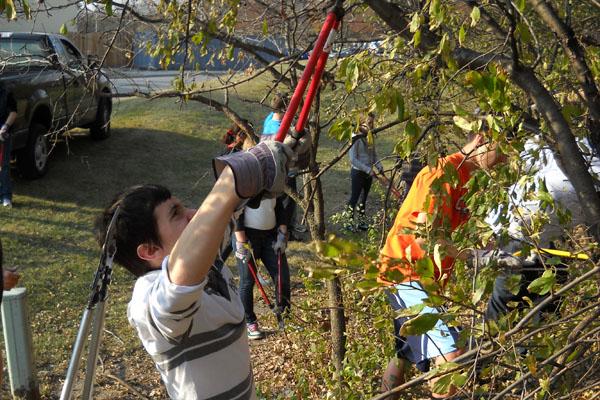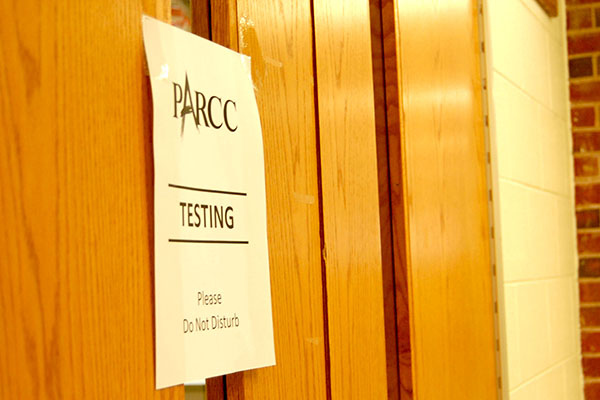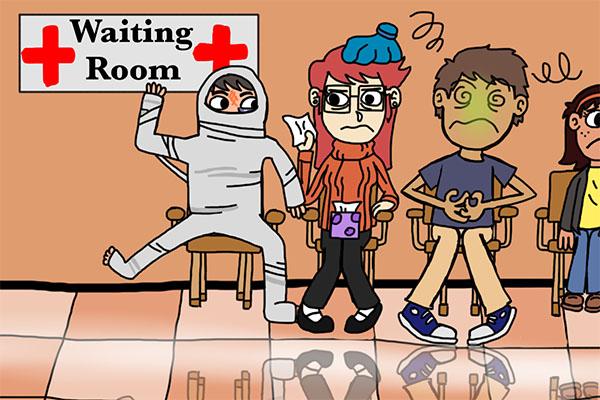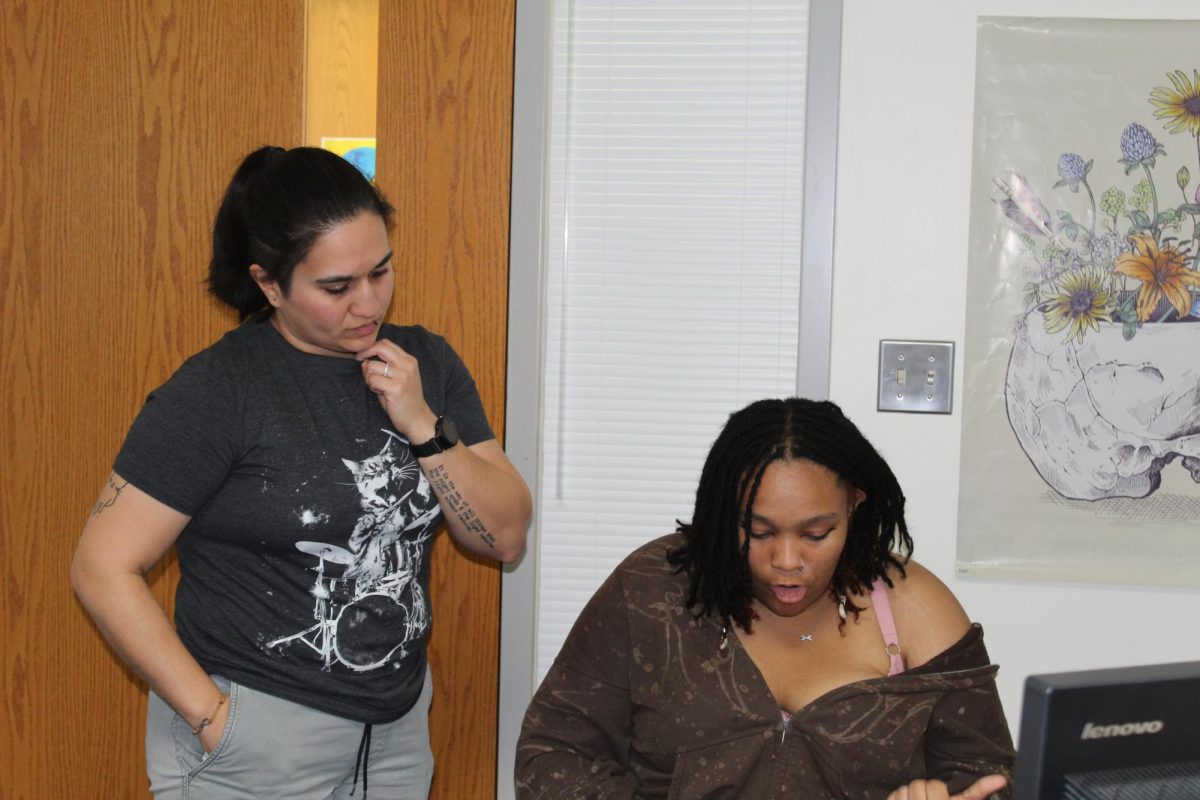
As the school board sits down to approve their yearly district goals, there is one absence. The district’s Green Goal, last seen in the 2008-09 list of priorities, is not going to return this year to join the hopeful numbers for issues such as RB’s graduation rate, attendance, the number of students in an AP class, and the year’s budget.
This is wrong. The green goal should be officially reinstated.
RB’s green goal was not a numerical goal, but it made things such as Ecology Club, SEE team, and the Day of Service priorities to give us a greener school. During the renovation in 2005, the green goal focused partially on trying to build a more energy-efficient building.
The absence of the goal signifies that, for the current board, the school’s environmental impact and the impact of the environment on our students, is not a top priority. It should be.
With the absence of the goal, the green ideal already seems to be disappearing. The Day of Service was last present in the 2010-11 school year; the following year it became the Month of Service. Last year, SEE team was gone. Even though both have come back this year, we have no guarantee that they will stay. The community has proven that it wants SEE team, but without a green goal the board has no official incentive to maintain it, or other environmental initiatives. These programs are important. We need the green goal to protect them from future budget cuts.
I believe that trying to reduce our environmental impact should definitely be a priority for the school. RB is a central location for much of the community, and should be setting a positive example for protecting the world we live in. Our electricity usage contributes to climate change, which is a contributing factor in the strange weather patterns, including hurricanes, that have been occurring around the globe.
Not only that, RB has an opportunity to improve the community through restoration work, which Eco Club and SEE team are currently active in recycling, and planting native foliage. These types of green activities make the community a more attractive, comfortable place to live. Even something as simple as bringing classes outside can fall under the green goal, which will serve the school twofold. Electricity will be reduced when the lights are out in the empty classroom, and students gain a stronger connection to nature. Such projects also give students a sense of awareness about the world, as well as the opportunity to try and make their influence on it a positive one.
One reason the goal may have been ignored is because of RB’s current financial situation. Everyone in the building realizes that there’s not exactly enough money right now for innovations. Class sizes are rising, and pay-to-participate is present in sports and some clubs. The school needs to focus on providing a quality education and high school experience for the students.
This does not mean that the Green Goal should be ignored. It makes it more important than ever.
Since the goal has never been based on specific numbers, there is no pressure to supply increasingly expensive green innovations at this time. Simply stating that Eco Club and SEE team should be maintained, and looking into small-scale projects, is enough to at least keep the environmental focus present in the school board. This way, when RB’s financial state improves, the green ideal will not be forgotten.
Not only that, if the school decides to undertake larger green innovations many of them can be paid for through grants. The Endzone Garden was paid in part with grants from seed companies and Whole Foods. There are more grants available that RB could try to utilize, and which would offset the cost of green changes the building ought to make.
In addition, some green renovations can in the long run save the school money. Using less electricity, whether by improving awareness about turning out lights and appliances, investing in lower-energy devices, or having some classes spend one period outside in the garden lowers the school’s electric bills. It may not seem like much, but small changes like that can add up to a significant decrease in energy costs, in addition to the environmental benefits.
Some people might claim that the students should be the activists toward a greener school. I agree. But the students cannot make immense changes to the school without administrative approval. The Endzone Garden, for instance, could not have just been built by Eco Club alone. The administration had to be involved in the planning for this feature. Hopefully, RB’s students will want more changes in the future, and if the administration has the green goal in the back of their consciousness, or if it can be pointed at as a persuasive tool, these students will likely be far more successful in their endeavors.
The loss of the green goal cannot be explained by an overall narrowing of goals. The board plans to implement a technology goal and budget to this year’s priorities. The eventual goal is to provide every student with a technological device of some sort. This does not seem like a money saving idea, and it may or may not actually improve the quality of education in the building. Rather, it could signify a shift toward larger class sizes as work is more streamlined. Some of this technology can be paid for through grants, like green initiatives can. However, since RB is technically part of a more affluent community, the size of these grants will be smaller than for other schools.
I can understand the desire to increase technology in the school, but I don’t think that technology should have precedence over the environment. Technology is not sustainable- in a few years the devices will be broken or obsolete, and will increase the cost the school. Students have been functioning successfully in RB without a laptop in their backpacks, and they can continue to do so. Eco Club and SEE team, on the other hand, are essential parts of our community and ought to be protected. When the financial situation improves, RB should be prepared to undertake further green projects, as they will lead to a more sustainable school.



















Martha • Mar 5, 2013 at 10:11 am
Kate,
This is a nice opinion piece. In the future, if you are talking about technology for students, I urge you and your colleagues to conduct some additional research. For example, Riverside District 96 has a one-to-one laptop program from 5th-8th grade. This program was initially supported by a grant, but that is long gone and the taxpayers are paying heavily for the administrative costs of this program, including several full-time employees. This is not an insignificant cost and it has not been offset by improved learning outcomes. In fact, at a recent D96 board of ed meeting, the administrator in charge of the program, Elizabeth Whaley, admitted that she hoped there would be less shallow learning with the computers in the future. As a parent, I have noticed the much weaker education of my 8th grader as compared to my 11th grader who did not have a laptop during school,
No matter what, a laptop or other device should never impact class size. I hope all of you stay on top of this.
Good luck with the Green Goal–perhaps if the board doesn’t reinstate it, you could consider having it as part of the “PTO” agenda? Doing that would allow grant applications as a 501(c)3 organization.
Thank you!